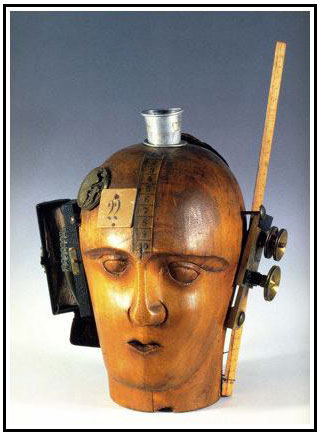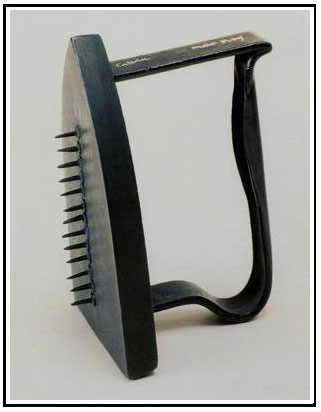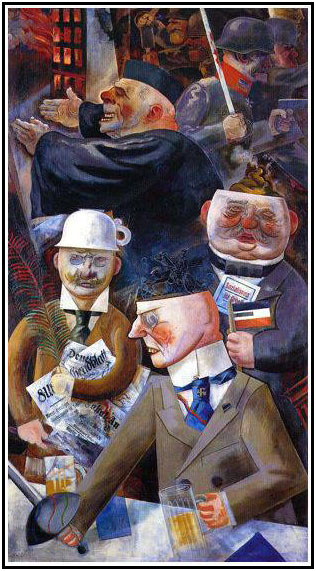DADA (c. 1916-1922)
Dada or Dadaism was a form of artistic anarchy born out of the disgust of the
slaughter of World War I. It declared that the national authorities on both sides had failed in its role and
was ultimately corrupt. Dada was not so much a style of art like Fauvism or Cubism; it was more of a protest movement with an
anti-establishment manifesto. In short, Dada was anti-war and anti-establishment.
Artists, writers and intellectuals who opposed the war sought refuge from
conscription in neutral Switzerland. On February 5th, 1916 writer Hugo Ball and Emmy Hemmings opened the
'Cabaret Voltaire' in Zurich, a rendezvous for the radical avant-garde. This venue was a cross between a night club
and an arts center where artists would exhibit their work to a backdrop of experimental music, poetry, readings and
dance.
Ball discovered the word ‘dada’ while looking in a French/German dictionary. In
French, 'Dada' means 'hobbyhorse’, a signifier for the ruler’s childishness and naivety. Ball stated, 'What
we call Dada is foolery, foolery extracted from the emptiness in which all higher problems are wrapped”.
In the end, Dada became too negative or absurd (audiences would often throw tomatoes
at the performers). After the war the Dadaists relocated to Berlin, Cologne, Hanover and New
York.
MARCEL
DUCHAMP (1887-1968)
“Fountain” (1917)

MAX ERNST (1891-1976)
“Murdering
Airplane” (1920)

RAOUL HAUSMANN (1886-1971)
"The Spirit of Our
Time" (1920)

MAN RAY (1890-1976)
"Flat Iron with Brass
Tacks" (1921)

"Object to be
Destroyed" (1923)

GEORGE
GROSZ (1893-1959)
“The Pillars of
Society” (1926)

Greed and Vanity are not values – they are
societal traits. Important to not delude oneself by using the word ‘value’ thinking that the problem has a
hope of change. The word ‘trait’ suggests a much steeper climb.
z
| 




